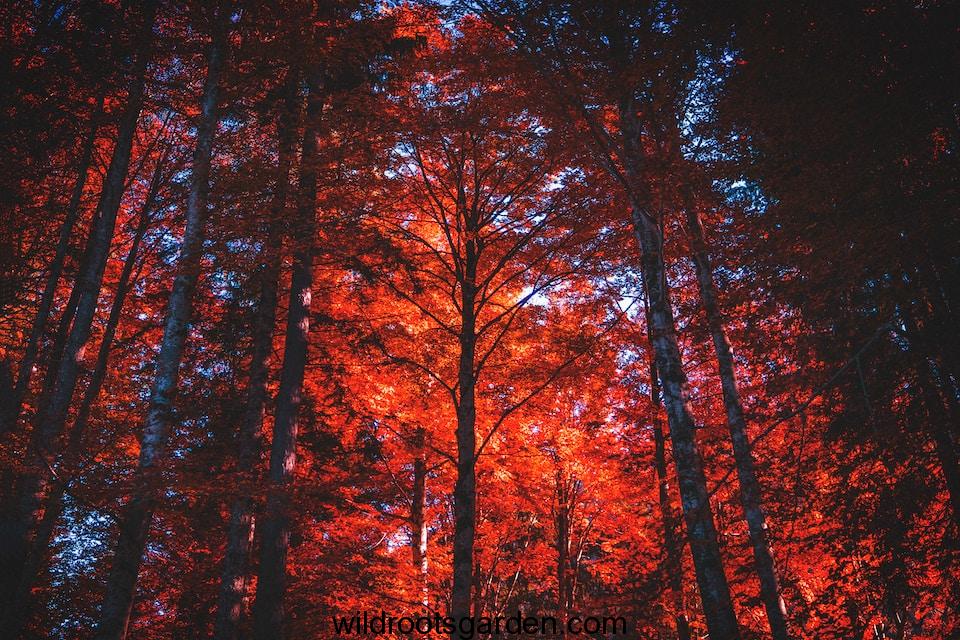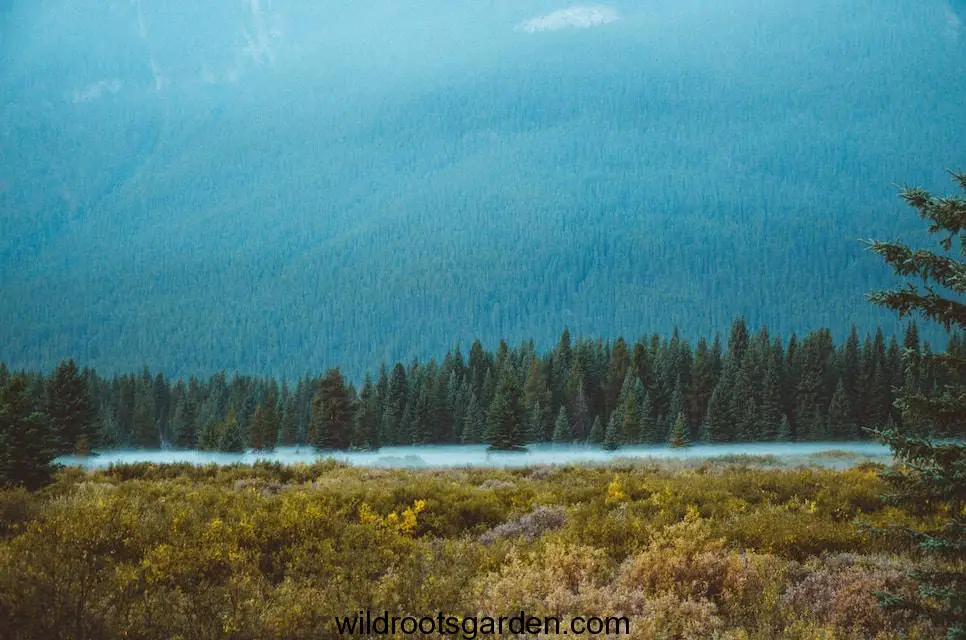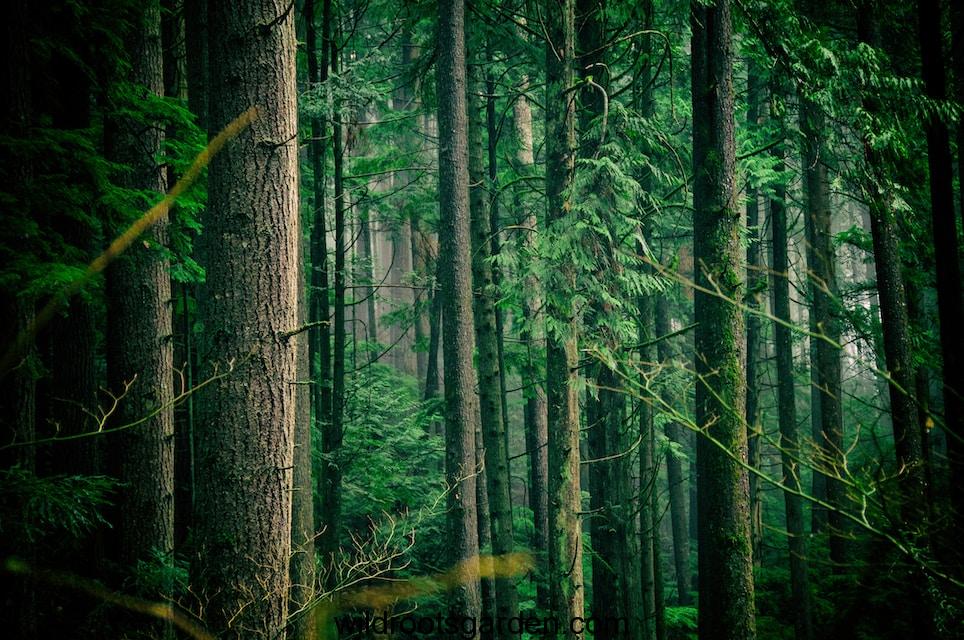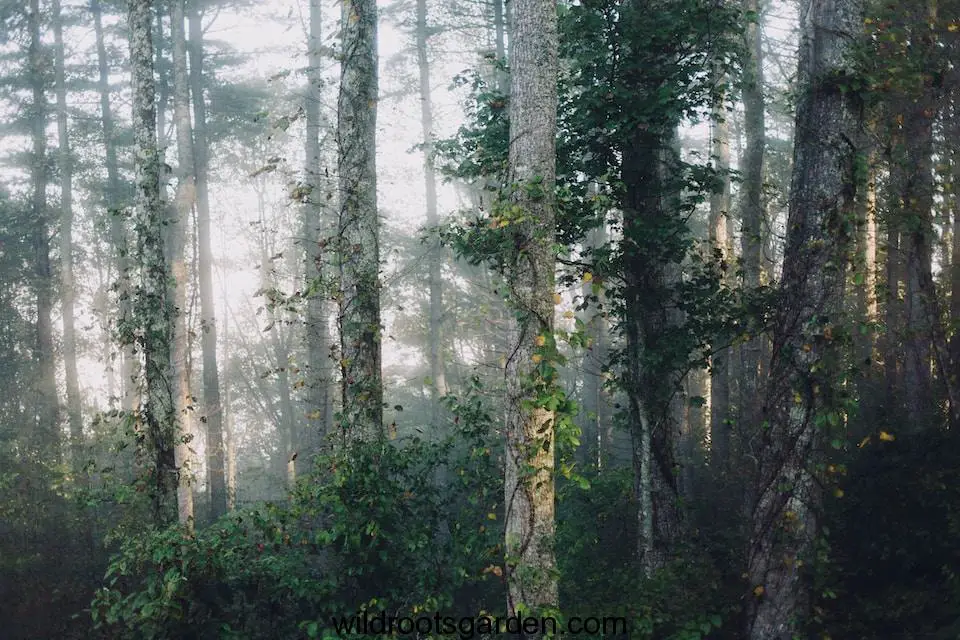Fast Growing Trees for Zone 4: Zone 4 winters, with their bone-chilling temperatures and abbreviated growing seasons, present a unique challenge for landscape enthusiasts. While visions of lush greenery and towering trees may dance in our heads, translating those dreams into reality requires careful consideration. One popular solution – planting fast-growing trees – promises to quickly fill empty spaces and bring life to your property. However, choosing the right fast-growing tree for zone 4 is crucial for long-term success and your ultimate satisfaction.
Before taking the plunge, let’s dive into the factors that deserve your thoughtful attention.
JUMP TO TOPIC
Table of Contents

I. Demystifying Fast Growing Trees for Zone 4:
First, it’s important to acknowledge that “fast-growing” in zone 4 might translate differently compared to warmer climates. Here, you can expect a moderate, rather than meteoric, pace. Trees classified as “fast-growing” in zone 4 typically add 12-24 inches of height per year, while their counterparts in milder zones might shoot up by 36 inches or more. Nevertheless, this steady growth can still transform your bare ground into a verdant paradise within a few years.
II. Planting the Seeds of Success: Key Considerations:

- Size Matters: Imagine your mature tree in all its glory. Will it overshadow your house, block windows, or crowd power lines? Research the mature height and spread of your chosen species and compare it to your available space. Think long-term to avoid costly mistakes and maintain a harmonious balance in your landscape.
- Sun-kissed or Shade-dappled: Trees have preferences, just like we do. Some bask in the warmth of full sun, while others prefer the gentle filtered light of partial shade. Match your tree’s sunlight needs to your existing conditions to ensure optimal growth and avoid stunted, unhappy specimens.
- Soil Secrets: From sandy to clay, each soil type holds its own special characteristics. Understanding your soil composition is vital for choosing trees that thrive in it. Some species tolerate wide ranges, while others are picky about drainage, pH levels, and nutrient content. A soil test can be your invaluable guide in this crucial step.
- Low-Maintenance or Hands-On: Do you envision yourself as a dedicated tree tamer or a hands-off admirer? Trees come with varying maintenance needs, from regular pruning and watering to minimal intervention. Assess your lifestyle and choose a tree that aligns with your desired level of dedication.
- Aesthetics Unveiled: Beyond practicality lies beauty. Consider the tree’s visual appeal – the vibrant foliage in spring, the delicate blooms in summer, and the fiery hues of fall. Do you dream of a cascading willow weeping by your pond, or a majestic oak casting dappled shadows on your lawn? Let your aesthetic aspirations guide your selection.
III. Unfurling the Canopy: Top Fast Growing Trees for Zone 4:

A. Large Shade Trees:
- Silver Maple (Acer saccharinum): Reaching an impressive 80 feet, this fast-growing giant provides ample shade with its broad, silver-green leaves. However, be mindful of its invasive root system and potential for wind damage.
- Red Maple (Acer rubrum): A stunning native option, the red maple’s fiery fall foliage is a showstopper. With a 60-80 foot mature height, it thrives in moist soils and offers dappled shade.
- Hybrid Poplar (Populus x canadensis): This fast-growing, low-maintenance option can reach 100 feet, providing quick shade and windbreaks. However, its brittle branches and invasive root system require careful consideration.
B. Flowering Beauties:
- Pink Flowering Dogwood (Cornus florida): Adorned with delicate pink blooms in spring and vibrant red berries in fall, this 20-30 foot charmer thrives in partial shade and offers stunning seasonal beauty.
- Eastern Redbud (Cercis canadensis): A burst of lavender-pink flowers in early spring makes this 20-30 foot native tree a delightful addition to any landscape. It prefers full sun and well-drained soil.
- Crabapple (Malus spp.): A versatile option, crabapples offer fragrant spring blossoms, attractive fruits, and vibrant fall foliage. Choose from various dwarf to medium-sized varieties depending on your space limitations.
C. Privacy Seekers:
- Green Giant Arborvitae (Thuja plicata ‘Green Giant’): This fast-growing evergreen forms a dense, emerald wall, achieving heights of 40-60 feet and offering excellent privacy screening. Consider its voracious appetite for space when planting.
- Eastern White Pine (Pinus strobus): A majestic native choice, the white pine grows tall and fast, reaching 60-80 feet
D. Adaptable All-Stars:
- Honeylocust (Gleditsia triacanthos): With its feathery foliage and tolerance for a wide range of soils, the honeylocust thrives in full sun or partial shade, reaching 40-60 feet and offering dappled shade and drought resistance.
- Bald Cypress (Taxodium distichum): This elegant, deciduous conifer provides year-round interest with its feathery needles and interesting “knees” that protrude from its roots. It prefers moist soils and full sun, maturing to a height of 50-70 feet.
- Hackberry (Celtis occidentalis): A tough and adaptable native, the hackberry tolerates poor soils and partial shade, reaching 50-70 feet and providing valuable wildlife habitat. Its rough bark and unique oval leaves offer additional character.
IV. Nurturing Your Green Dream: Planting and Care Tips:

Planting your chosen tree is just the beginning of the journey. To ensure its healthy growth and longevity, follow these essential tips:
- Prepare the site: Dig a hole two to three times the diameter of the root ball and loosen the surrounding soil.
- Plant properly: Place the tree at the proper depth, ensuring the graft union (if present) remains above the soil line. Backfill the hole with a mixture of native soil and compost, gently tamping it down.
- Water wisely: Deeply water your tree regularly, especially during the first year, to encourage root establishment. Adjust watering frequency based on soil moisture and weather conditions.
- Mulch magic: Apply a layer of organic mulch around the base of the tree to retain moisture, suppress weeds, and regulate soil temperature.
- Prune with purpose: Proper pruning encourages strong structure and removes dead or diseased branches. Research the specific pruning needs of your chosen tree and avoid over-pruning.
V. Beyond the Trees: Sustainability and Harmony:
Planting fast-growing trees is a powerful way to enhance your landscape, but it’s crucial to consider the broader ecological picture. Opt for native species whenever possible, as they provide valuable habitat for local wildlife and promote biodiversity. Avoid invasive species that can disrupt the natural balance of your ecosystem. Research the potential impact of your chosen tree on surrounding vegetation and infrastructure to ensure long-term harmony in your landscape.
Conclusion: A Landscape Awakened
Bringing fast-growing trees into your Zone 4 landscape is an investment in beauty, shade, privacy, and even a touch of magic. By carefully considering your needs, the trees’ attributes, and the natural environment, you can cultivate a thriving oasis that delights your senses and contributes to a healthier ecosystem. So, choose wisely, plant diligently, and watch as your vision unfolds, one verdant leaf at a time.
FAQs about Fast Growing Trees for Zone 4:
What are some fast growing trees for zone 4?
Some fast growing trees for zone 4 are Northern Red Oak, Silver Maple, Black Ice Plum, Hybrid Poplar, and Autumn Blaze Maple. These trees can grow up to 3 feet per year and provide shade, beauty, and fruit
How do I plant and care for fast growing trees in zone 4?
To plant fast growing trees in zone 4, you should choose a location that gets at least 6 hours of sunlight per day, has well-drained soil, and enough space for the tree to mature. You should dig a hole twice as wide and as deep as the root ball, place the tree in the center, and fill the hole with soil and water. You should also mulch around the base of the tree, stake it if necessary, and prune any dead or damaged branches. You should water the tree regularly, especially during the first year, and fertilize it in the spring.
What are the benefits of growing fast growing trees in zone 4?
Growing fast growing trees in zone 4 can provide many benefits, such as reducing energy costs, improving air quality, attracting wildlife, increasing property value, and enhancing the landscape. Fast growing trees can also provide food, wood, and other products.
What are the potential problems of growing fast growing trees in zone 4?
Growing fast growing trees in zone 4 can also pose some challenges, such as dealing with pests, diseases, invasive species, and storm damage. Some fast growing trees can also have weak wood, shallow roots, or messy fruits that can cause problems for your lawn, house, or neighbors. You should research the specific characteristics of each tree before planting and take preventive measures to avoid or minimize these issues.
Where can I buy fast growing trees for zone 4?
You can buy fast growing trees for zone 4 from various online or local nurseries that specialize in hardy and adaptable trees. Some examples are Fast-Growing-Trees and Nature Hills. You should check the availability, quality, and price of each tree before ordering and follow the planting and care instructions provided by the seller.


